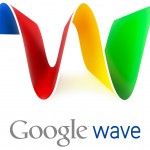Hi, This is my first post on eMarketinGuide. While I was thinking about my 1st post topic, suddenly, I got invitation from Google Wave (I heard, a lot of people are getting invitation today). I tried all my tricks and hacks to use the Google Wave so below mentioned are the overview and few tips that will be useful for new & advanced users:
Wave launched on 30th September’09. In one line definition “Google Wave is a real-time communication platform“. It combines various aspects of email, instant messaging, wikis, web chat, social networking, and project management. You can bring a group of friends or business partners together to discuss how your day has been or share files in short conference.
So now no need to install Gtalk or Gmail small apps on your desktop, and no need to open blogger or Gmail on separate browser tabs. Google Wave is the one stop solution for all above mentioned needs.
Here’s the 10 mins overview about Google Wave by Google team:
In order to use Google Wave effectively, you need to learn few definitions and here they’re:
- Wave: A wave, specifically, refers to a specific threaded conversation. It can include just one person, or it can include a group of users or even robots (explained below).
- Wavelet: A wavelet is also a threaded conversation, but only a subset of a large conversation.
- Blip: Even smaller than a Wavelet, a Blip is a single, individual message. It’s like a single line of an IM conversation.
- Document: It refers to the content within a blip. This seems to refer to the actual characters, words, and files associated with a blip.
- Extension: An extension is a mini-application that works within a wave. These are the apps within Wave. There are two main types of extensions: Gadgets and Robots.
- Gadgets: A gadget is an application users can participate with, many of which are built on Google’s OpenSocial platform.
- Robots: Robots are an automated participant within a wave. They can talk and interact with users and waves. They can also provide information from outside sources like Twitter.
- Embedded Wave: An embedded wave is a way to take a Google Wave and the conversation within it and place it on your website. Users could use this as a chatroom, as a way to contact you, or for something more.
And now few secret tips for Google Wave:
- To list only unread waves in your inbox use the search ‘is:unread in:inbox’.
- Google Wave Use Cases.
- Use spacebar to read through un-read blips.
- Double-click anywhere a wave to reply or edit is my fave.
- For a comprehensive list of wave robots and gadgets visit http://sites.google.com/site/gwaveextensions/.
- CTRL + Space to mark the whole wave as read.
- Google integrates web search into Waves, which opens up the possibility for a real-time collaborative search.
- Reply where appropriate. Where your reply lives can be as important as what your reply says.
All these stuff are Just a Preview, however lot more to come…
– Wave: A wave, specifically, refers to a specific threaded conversation. It can include just one person, or it can include a group of users or even robots (explained below). The best comparison I can make is that it’s like your entire instant messaging (IM) history with someone. Anything you’ve ever discussed in a single chat or conversation is a wave.
– Wavelet: A wavelet is also a threaded conversation, but only a subset of a larger conversation (or a wave). It’s like a single IM conversation – a small part of a larger conversation and a larger history. Wavelets, though, can be created and managed separately from a wave.
– Blip: Even smaller than a Wavelet, a Blip is a single, individual message. It’s like a single line of an IM conversation. Blips can have other blips attached to them, called children. In addition, blips can either be published or unpublished (once again, it’s sort of like typing out an IM message but not yet sending it).
– Document: A document actually refers to the content within a blip. This seems to refer to the actual characters, words, and files associated with a blip.
– Extension: An extension is a mini-application that works within a wave. So these are the apps you can play with while using Wave. There are two main types of extenisons: Gadgets and Robots
– Gadgets: A gadget is an application users can participate with, many of which are built on Google’s OpenSocial platform. A good comparison would be iGoogle gadgets or Facebook applications.
– Robots: Robots are an automated participant within a wave. They can talk with users and interact with waves. They can provide information from outside sources (i.e. Twitter) or they can check content within a wave and perform actions based on them (i.e. provide you a stock quote if a stock name is mentioned).
– Embeded Wave: An embeded wave is a way to take a Google Wave and the conversation within it and place it on your website. Users could use this as a chatroom, as a way to contact you, or for something more.


Hi, this is a comment.To delete a comment, just log in and view the post's comments. There you will have the option to edit or delete them.